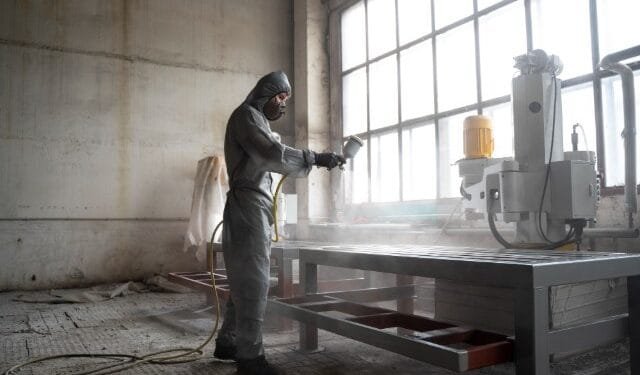Some shop owners swear by tradition, while others embrace a switch the moment it proves faster, cleaner, and more reliable. Coating finishes have come a long way, and many are now asking whether a powder coating machine can actually take the place of liquid coating systems. The answer? It’s more complex—and more interesting—than it seems.
Solvent-Free Application Enhances Environmental Compliance
A powder coating machine doesn’t rely on harmful solvents to get the job done. This alone transforms how a shop handles environmental compliance. Liquid coatings often contain volatile compounds that evaporate during curing, leading to air quality concerns and stricter waste management rules. But with powder, there’s no wet stage, no toxic fumes, and fewer steps needed to stay within EPA regulations.
This shift has a ripple effect on workplace safety and long-term costs. Workers don’t need specialized ventilation systems just to spray parts. They also avoid constant exposure to solvents, which cuts down on health risks. In short, the process feels more controlled, cleaner in every sense. Businesses focused on sustainability are already turning to powder coating machines because they support cleaner air and a healthier team.
Single-Coat Coverage Offers Superior Production Efficiency
With liquid coating, getting that smooth, even coverage usually means several coats and long dry times. Powder coating machines, by contrast, can achieve full coverage in a single application. That’s not just convenient—it’s a game changer for production lines that can’t afford delays.
By cutting out extra layers and reducing handling time, a powder coating machine simplifies the process without sacrificing finish quality. Operators can coat, cure, and cool parts faster, pushing more products out the door in less time. For manufacturers focused on boosting throughput without sacrificing finish, that alone makes the switch worth it.
Electrostatic Application Reduces Material Consumption Drastically
The heart of the powder coating process lies in how the powder sticks. The electrostatic method used by a powder coating machine gives particles a charge that clings to grounded metal surfaces like a magnet. That simple physics trick changes the economics of every job.
This highly targeted application means less overspray and fewer wasted materials. Liquid paint can drip, run, or spray past the target, costing money every minute it’s used. In contrast, powder sticks where it’s meant to, and what misses can often be reclaimed. It’s this level of control that helps shops run leaner and cleaner.
VOC-Free Operation Exceeds Regulatory Standards
Liquid coatings release volatile organic compounds (VOCs), which are tightly regulated by government agencies. These VOCs are not only harmful to the environment, but also a hazard to shop workers over time. The powder coating machine sidesteps that issue completely.
Because no solvents are involved, powder systems are VOC-free by design. That makes them naturally compliant with even the strictest air quality standards. For businesses operating in regions with tough environmental rules, powder coating doesn’t just meet the mark—it often surpasses it. That means less paperwork, less worry, and more time focusing on quality production.
Reclaimable Materials Significantly Cut Operational Costs
Unlike liquid paint, excess powder doesn’t have to go to waste. Many powder coating machines are set up with reclaim systems that collect and reuse unused powder. That’s a built-in advantage when material costs are rising and every ounce matters.
Here’s what makes this such a smart solution:
- Overspray can be captured and reused with minimal loss.
- Less need to buy replacement powder as often.
- Reduced waste disposal fees over time.
This reclaimability gives small shops a leg up and allows larger operations to tighten their bottom line. Over time, it turns a big-ticket machine into a cost-saving tool.
Minimal Curing Time Accelerates Throughput Capacity
Curing time is often the bottleneck in a paint shop. Liquid finishes require long drying periods between coats, and even longer if the humidity is high. Powder coating ovens, which many refer to as powder coating machines, drastically reduce cure time to a matter of minutes.
Fast curing equals fast turnaround. That speed unlocks new production capacity without hiring more labor or adding more shifts. Shops can coat parts in the morning, have them cooled and packaged by lunch, and move on to the next batch. The benefits stack up quickly once the oven hits operating temperature.
High-Durability Finishes Outperform Liquid Coating Lifespans
Durability is the final—and possibly most impressive—advantage. Finishes applied with a powder coating machine resist chipping, scratching, UV damage, and corrosion better than most liquid paints. This makes them ideal for metal parts exposed to heat, friction, or outdoor elements.
That means fewer returns, fewer warranty claims, and a better product reputation. It’s not just a protective layer—it’s a performance upgrade. In sectors like automotive, aerospace, or industrial equipment, that lasting finish is often the reason teams commit to the switch. Powder may start as a cost decision, but it ends as a quality win.








